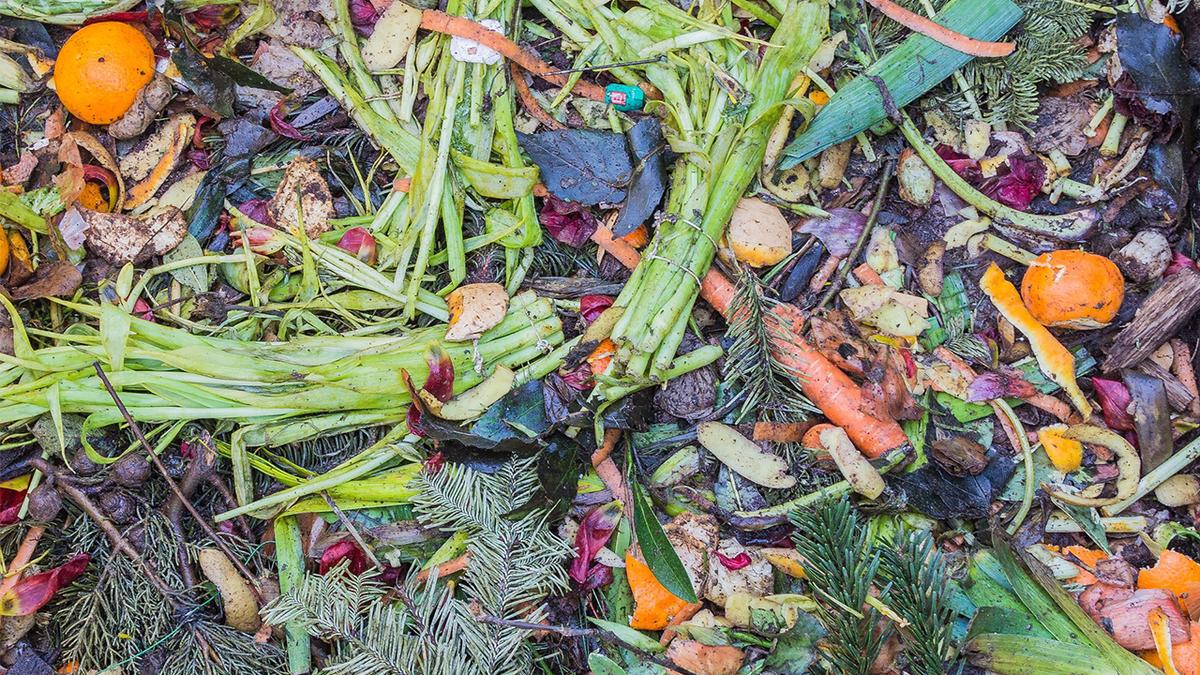In honor of Earth Week, UMD is sharing its new and innovative approach to reducing waste on Friday, April 20, 2018 from 11:30 a.m. - 12:20 p.m. in the Food Court, 1120 Kirby Drive.
Team members from the Office of Sustainability are demonstrating Dining Services’ amped-up composting efforts. This, combined with cutting edge packaging, are drastically reducing the amount of garbage leaving campus. Bulldogs are now using compostable plates, napkins, forks, knives, sub wrappers, and coffee and Coke cups in the Food Court.
Sustainability Activities Coordinator Jonna Korpi says the move by Dining Services is fantastic and now it’s up to her office to let Bulldogs know their waste is compostable. "While we now have the potential to be almost entirely waste free in our Food Court, we're also faced with the reality that we need to continue to educate our consumers. It's refreshing to know that even though not every compostable product is making it to the compost pile at WLSSD, these products still have a smaller environmental footprint than styrofoam plates, waxed cups, and plastic forks and straws– which we have completely eliminated,” she says.
Associate Vice Chancellor for Student Life Corbin Smyth says UMD’s partnership with the Western Lake Superior Sanitary District’s industrial composting facility is empowering the changes in the Food Court. “We're fortunate to have a local industrial composting site as a partner, who is able to accept much more than organic food waste– the types of things that would not break down in a typical backyard compost pile,” he explains. “Additionally, since the fees for compost diversion are significantly lower than typical waste tipping fees, we are able to reduce our environmental impact and ultimately save on costs as well.”
The Larger Effort
The composting achievements in the Food Court are the latest in UMD’s ongoing mission to communicate, educate, and inspire action to integrate sustainability into all aspects of campus life.
Standouts Include:
Energy emissions: Despite significant growth, UMD has kept electricity use and carbon emission steady since 2007, and are seeking additional pathways to meet 25% reduction of CO2 by 2020.
Solar: Installing 90 kilowatts (kW) of new solar arrays in the next six months on two separate campus buildings, which will more than triple current solar energy production on UMD’s campus.
Community Solar: UMD invested in Northern Minnesota’s first 100-kilowatt block community solar garden (10% of total). Located in Wrenshall, it began producing power in January 2018, expected to produce over 200,000 kilowatt-hours annually
Reuse/recycling: UMD provides 60 water bottle filling stations across campus as nearly 90% of students indicated they use a refillable water bottle. HCAMS project is tracking at 97% recycled construction materials for reuse, repurposing or recycling.
Academics: UMD has a Sustainability requirement in our Liberal Education Requirements, ensuring all students learn about sustainability during their academic career, as well as many sustainability-related majors and minors.
